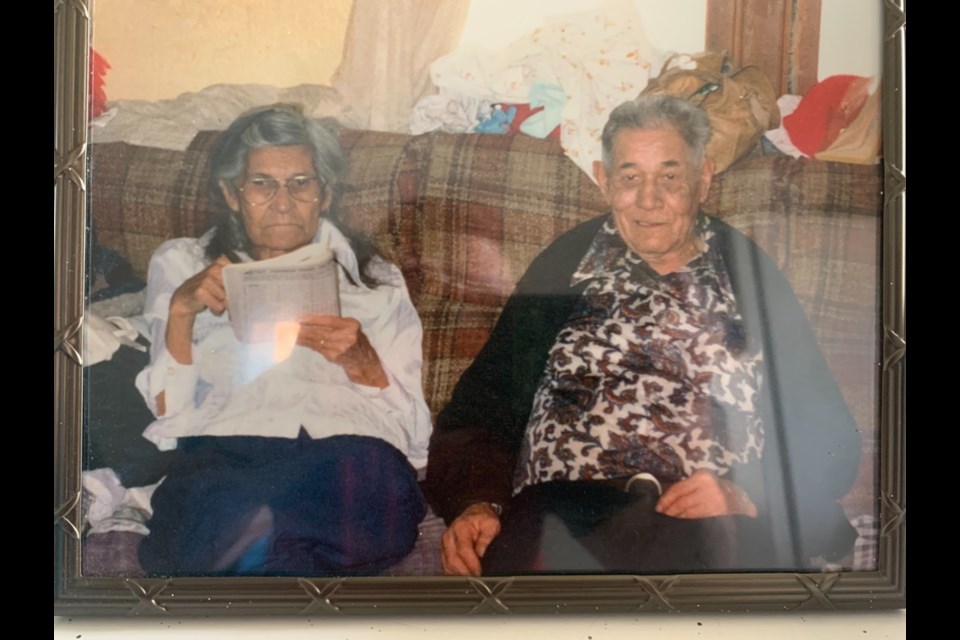BARRHEAD - A daughter and granddaughter of residential school survivors could not believe the items she put on the steps of Barrhead's St. Anne's Catholic Church in remembrance of the estimated 215 Indigenous children discovered buried on the grounds of a former residential school in Kamloops, B.C. have disappeared.
The Catholic Church operated the Kamloops school from 1890 and 1969. The federal government then took control of its operation, running it as a day school until its closure in 1978.
Taira Yiu, the daughter and granddaughter of residential school survivors, put a pair of her son's shoes, a teddy bear from her daughter, a keychain that her uncle made with little moccasins on it and an orange tie in front of the church's door at about noon on June 3.
To ensure the shoes did not advertently fall off the steps, she tied them to the railing. However, when she went by the church a few hours later, all were gone.
People across the country have been laying shoes and teddy bears on the front steps of churches and government bodies as a demonstration of solidarity for those who suffer and continue to suffer, directly or indirectly, due to the residential school system. Churches and government buildings such as courthouses have been popular locations for the pop-up memorials as the institutions that most often were charged with operating the schools.
"It broke my heart," Yiu said. "It was like someone had punched or stabbed me in the stomach."
The Barrhead Leader contacted the church, asking if they had taken the items in for safekeeping or moved the memorial to another location on the church grounds. They said they were unaware that Yiu had created the makeshift memorial.
Yiu added that the issue of residential schools and the forceable removal of Indigenous children from their homes is especially personal to her.
"Both my grandparents Sylvester and Maggie Powder went to the Lac La Biche Mission," she said.
Sylvester was there from 1913 to 1930 from ages three to 18, while Maggie attended the school from 1927 to 1930 from the age of 15 to18.
"Before he died, when I was about 13, my grandpa would tell me stories about how some of the priests would impregnate the native girls and how the babies were aborted. My grandfather would have to bury them in the back," Yiu said, adding her father, Orville, also attended the school. "So when I see stories like the one about the school in Kamloops, it really bothers me. And then to have someone take the memorial ... you can understand why I am so upset."
She also said that she wanted to honour all the survivors of residential schools in Barrhead, noting there are at least a dozen and their children and the children's children.
"The tragedy of residential schools did not just impact those that attended them. It is a generational issue," Yiu said.
According to the Lac La Biche Museum's archives, the residential school, originally named Notre Dame des Victoires after a Catholic church in Quebec City, operated from 1893-1898. The school moved to Saddle Lake and then again to St. Paul in 1931, where it was renamed Blue Quills Indian Residential School.
The last federally operated residential school to close was Gordon's Indian Residential School in Saskatchewan. It closed in 1996.
An estimated 150,000 Indigenous children were taken to one of Canada's 140 residential schools during their 100-plus year history.
Barry Kerton, TownandCountryToday.com
Read more from TownandCountryToday.com




